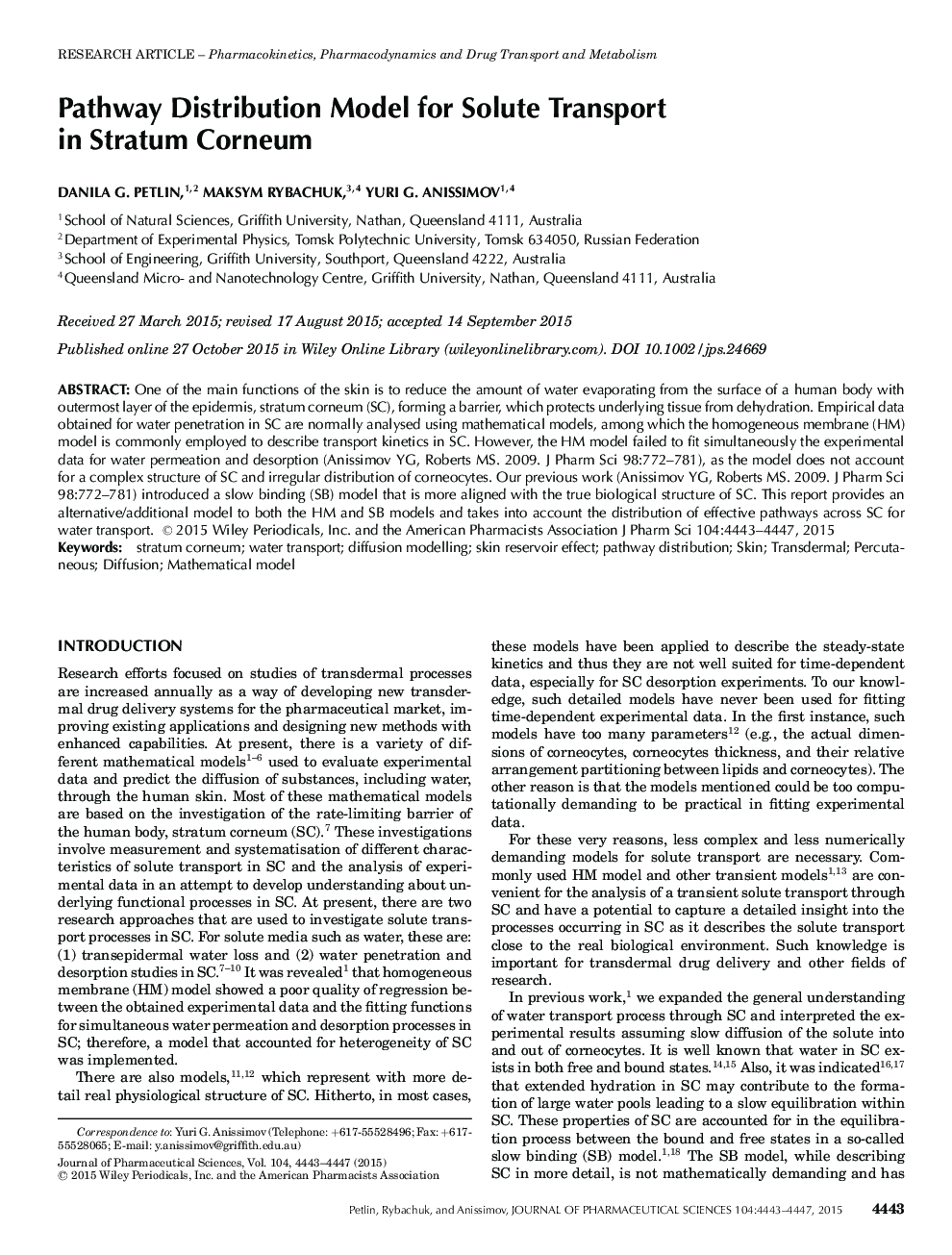| Article ID | Journal | Published Year | Pages | File Type |
|---|---|---|---|---|
| 10161971 | Journal of Pharmaceutical Sciences | 2015 | 5 Pages |
Abstract
One of the main functions of the skin is to reduce the amount of water evaporating from the surface of a human body with outermost layer of the epidermis, stratum corneum (SC), forming a barrier, which protects underlying tissue from dehydration. Empirical data obtained for water penetration in SC are normally analysed using mathematical models, among which the homogeneous membrane (HM) model is commonly employed to describe transport kinetics in SC. However, the HM model failed to fit simultaneously the experimental data for water permeation and desorption (Anissimov YG, Roberts MS. 2009. J Pharm Sci 98:772-781), as the model does not account for a complex structure of SC and irregular distribution of corneocytes. Our previous work (Anissimov YG, Roberts MS. 2009. J Pharm Sci 98:772-781) introduced a slow binding (SB) model that is more aligned with the true biological structure of SC. This report provides an alternative/additional model to both the HM and SB models and takes into account the distribution of effective pathways across SC for water transport.
Keywords
Related Topics
Health Sciences
Pharmacology, Toxicology and Pharmaceutical Science
Drug Discovery
Authors
Danila G. Petlin, Maksym Rybachuk, Yuri G. Anissimov,
